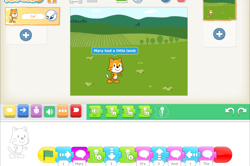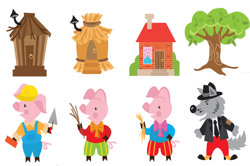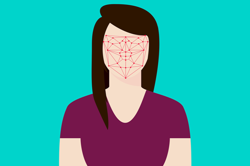Can an AI recognise what you are drawing
This lesson provides an opportunity to incorporate representation of data using a relevant context being studied in the classroom. Students represent an object using a line drawing, focusing on the features of the object that enable it to be easily recognised. Students experiment with creating representations using an AI drawing tool that guesses what is being drawn.
Additional details
| Year band(s) | Foundation, 1-2 |
|---|---|
| Content type | Lesson ideas |
| Format | Web page |
| Core and overarching concepts | Data representation, Abstraction |
| Australian Curriculum Digital Technologies code(s) |
AC9TDIFK02
Represent data as objects, pictures and symbols
AC9TDI2K02
Represent data as pictures, symbols, numbers and words |
| Technologies & Programming Languages | Artificial Intelligence |
| Keywords | Artificial Intelligence, AI, artificial, intelligence, teachable machine, smart phone, algorithms, problem solving, digital systems, Lesson idea, Lesson plan, Digital Technologies Institute, Karsten Schulz, autodraw, quickdraw quick draw |
| Integrated, cross-curriculum, special needs | The Arts, Digital Literacy |
| Organisation | ESA |
| Copyright | Creative Commons Attribution 4.0, unless otherwise indicated. |
Related resources
-

Data representation
Ideas for teaching about patterns in data, representing data as pictures, symbols and diagrams as well as ideas for teaching about collecting, sorting and using digital systems to present data.
-

Time to rhyme
Retell a known nursery rhyme using ScratchJr to create an interactive animation.
-

Three little pigs
Retell the story of the Three Little pigs using a light sensing robot such as Ozobot.
-

Schoolyard biodiversity detectives
Collect data on the biodiversity in garden beds around your school to measure the biodiversity (that is the different types of plants and animals).
-

Can AI guess your emotion?
Discuss emotions as a class, and introduce the idea of artificial intelligence (AI).
-

Data collection and representation: What’s in your lunchbox? (Years F-2)
The type of fruits and vegetables in school lunchboxes or those eaten at crunch and sip or fruit break time can provide a good source of data for a classroom investigation.
-

Data interpretation: organise data by classifying, grouping and sorting objects (Years F-2)
To sort and classify familiar objects, students use computational thinking skills to organise data in a logical way.
